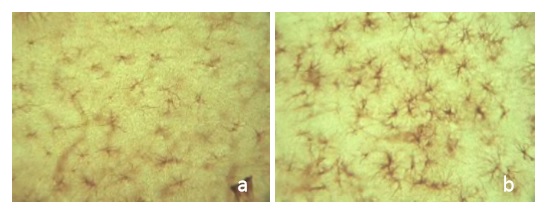Distribución hipocampal del Neuropeptido Y (NPY) en un modelo animal de demencia senil del tipo Alzheimer inducido por estreptozotocina
DOI:
https://doi.org/10.33017/RevECIPeru2011.0041/Keywords:
Sodium selenite, NPY, Streptozotocin, Sporadic dementia of Alzheimer's type.Abstract
Distribution of numerous neuropeptides in the human brain suggests that peptidergic systems may contribute to the pathogenesis of cognitive impairment in pathological aging such as dementia disorders. Neuropeptide Y (NPY) is a 36-amino acid peptide and it is the most abundant neuropeptide presently known in the mammalian brain. The primary structure of NPY has been well preserved during evolution making this peptide one of the most conserved among species. Although some divergent data are available, the bulk of evidence suggests that NPY levels in cortex, hippocampus, basal ganglia and cerebrospinal fluid are contradictory. Intracerebroventricular-streptozotocin (ICV-STZ) in rats causes impairment of brain glucose and energy metabolism along with oxidative damage and cholinergic mdysfunction, and provides a relevant model for Alzheimer’s disease (AD). The present study examined the presence of inmmunoreactive cell bodies containing NPY in a rat model of AD. Male rats were injected bilaterally with ICV-STZ (0.5mg/kg), while sham rats received the same volume of vehicle, then rats were sacrificed for immunocytochemical assays. One month after STZ injection a high density of NPY-immunoreactive perikarya was found in the hippocampal CA1 region, CA2 region, CA3 region and dentate gyrus (DG). In addition, activated astrocytes were seen in the hippocampus and in the cortex. This NPY distribution indicates that the neuropeptide studied might be involved in multiple functions like neuroprotection in the rat brain. These finding suggest that NPY may have important roles in the progression of AD.


